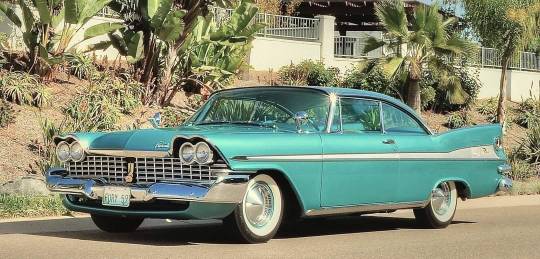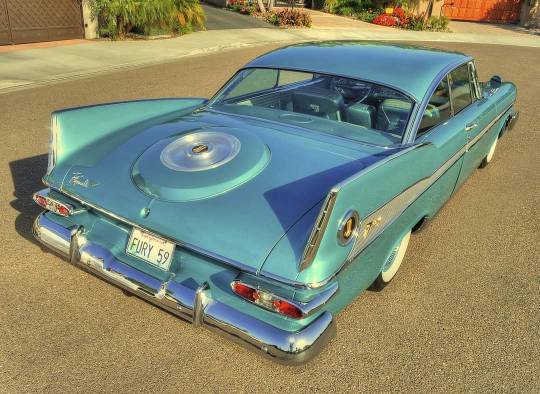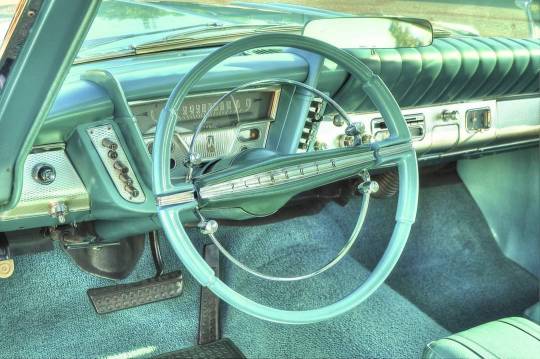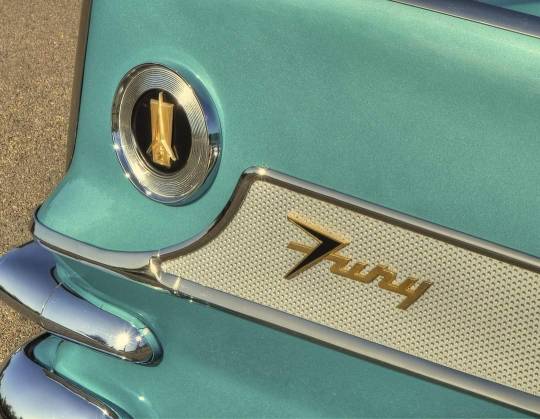#1959 Plymouth Sport Fury
Explore tagged Tumblr posts
Text

"Hogging Three Parking Spaces"
digital collage & digital painting by Mick Mather
(click image to view actual size)
#Mick Mather#digital art#digital collage#digital painting#'found' images#digital manipulation#landscape#1959 Plymouth Sport Fury#beach & hotels#MickMathersARTblog
6 notes
·
View notes
Text


Plymouth Sport Fury 2-Door Hardtop 1959. - source Cars & Motorbikes Stars of the Golden era.
75 notes
·
View notes
Text

1959 Plymouth Sport Fury
#Plymouth Sport Fury#Plymouth Fury#Plymouth#car#cars#mopar#moparperformance#moparnation#moparworld#fury
76 notes
·
View notes
Note
I didn’t think I had anything else to ask, but then I tried to sleep and I was wrong
So some, maybe half, of Ratchet’s mobility issues come from injuries that healed wrong huh? That does make sense, and fixing that would require breaking those parts and making them heal correctly, which would then necessitate a repeat of a painful healing process
You can’t just say that Firestorm finding out that Robyn shot Ricochet would be a disaster and not elaborate, that just makes me wonder
The problem with being pushed off a bridge at a hundred-fifty kilometers per hour and falling four stories to land roof-down on the tarmac, for Ratchet, is that he is not an australian model and was already past the point of factory support when he crashed.
And not only is he not an australian model, he isn't an american model anymore either. Rundown Turboski turned him into a unique monstrous hybrid. His entire running gear is different.
Ratchet isn't really a 1959 Plymouth Fury Sport. He's a custom build with a pretty outer shell that looks like a 1959 Plymouth Fury Sport.
He spent five years in a mechanic's shop being tinkered with. A lot of his parts are second-hand things shipped overseas and cleaned up. Even more is custom or re-rigged from completely different breeds of car.
And the tech who fixed him did a fantastic, impossible task. A labour of love, above and beyond.
And it still just. Isn't. Right.
(And Rundown could fix him, but he's never going back home, is he?)
The drama between Firestorm and Robyn would be genuinely cataclysmic. Robyn would try to be all sad and pathetic and Firestorm would reach in and drag all her rage and abandonment issues out for the world to see. It's not just Ricochet being shot; its the endless childhood afternoons of being locked inside so he couldn't wander too far, snobbing his friends so they don't come to his home, pushing for answers because she didn't get the response she wanted. It all comes to a head when he learns she forced away his favourite brother. (And then LIED TO HIM for YEARS and IGNORED HIM AND-) Three siblings dead and nothing to show for it. He wants to kill her. Maybe he tries and maybe she doesn't fight back.
Robyn never actively tried to be abusive but she was. She never changed. I think she would change after this, but I also don't think Ricochet or Firestorm would forgive her for what she's done.
But they don't need to forgive the past to look for a brighter future.
#i love these guys theres sooo much juicy drama#cars pixar#pixar cars#backwater downs#food for thought
10 notes
·
View notes
Photo
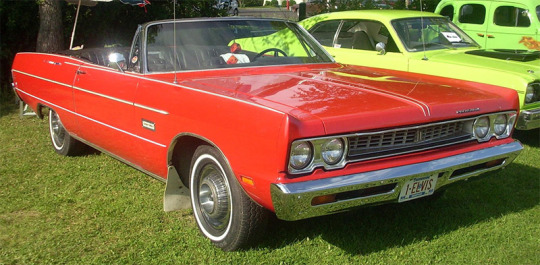
New Post has been published on https://fastmusclecar.com/the-mighty-plymouth-fury/best-muscle-cars/
The Mighty Plymouth Fury
By Dave Ashton
The Plymouth Fury is a great example of a muscle car which was around for many years before the golden age of the late 1960s-1970s. Like many models of the time, it was slightly overshadowed by the more popular makes, but it still had all the attributes that make up a classic. Tracking the Plymouth Fury’s back history provides us with a rough road map of how the muscle car world came into being, and was ultimately squeezed and sanctioned to death by the mid-to-late 1970s. Below we will go through the Plymouth Fury’s back history, with some of the standout examples along the way.
The Plymouth Fury is a classic American car with character, style, and performance. With six generations total and two half-generations included, it’s no surprise that the 1959 Plymouth Fury has become a cornerstone of the vintage car market. Whether you choose one of the original two-door hardtops or a later mid-sized sedan, the Plymouth Fury is sure to make a statement on the road.
The Plymouth Fury was also renowned for its iconic grille, which featured three large slots located between the headlights. The front and rear end of the car were equally distinctive, with the hood scalloped to accommodate the engine and tailfins that ran the length of the car. The interior was spacious and luxurious, with a full instrument panel and ample storage space.
It wasn’t until the early 1960s that the Fury was treated to muscle car like power with the 426cu Wedge and Hemi V8, then having this styling redesigned to fit in with the muscle car era.
Generations
The Plymouth Fury began life in 1955 and was produced until 1989. It began as a sub-series of the Belvedere, then became its own model for 1959 and remained so for the remainder of its run. Changes to the model over the years included body sizes and engine options, such as the 350cu. V8 Golden Commando was equipped with twin four-barrel carburetors producing 305 hp (227 kW). The 1959 Plymouth Sport Fury and the 1966-1969 Plymouth VIP are also part of this model’s extensive history.
The first generation Plymouth Fury featured a hardtop with aluminum trim in 1956 and 1957, and a buckskin beige paired with gold anodized aluminum trim in 1958. There were special interiors, bumper wing-guards, and the option of the Golden Commando V8. This setup was eventually recalled and replaced with a conventional dual 4-barrel setup. Other 1958 options include the 318 cu in (5.2 L) V-800 Dual Fury (with 4 and 2-barrel options) and the 315 hp (235 kW) fuel injection option.
The second generation Plymouth Fury was produced in 1959 and 1961, and featured a convertible and several 4-door and 2-door models. The station wagon version of this model was known as the Sport Suburban and was not marketed as a part of the Fury series. Additionally, a 1959 Dodge Viscount was offered based on the Fury but featured a 1959 Dodge front clip.
The third generation was introduced in 1962 and featured a 2-door Sport Fury which was reintroduced after being dropped at the end of 1959. This Sport Fury was discontinued in 1971. The 225 cubic inch (3.7 L) Slant Six and 318 cu in (5.2 L) V8 remained from the prior generation, while the 361 cu in (5.9 L) V8 and 350 cu in (5.7 L) V8 were available as options.
The fourth generation was produced from 1965 through 1974, offered as a full-size car and available as a 4-door sedan, 2-door hardtop and 4-door hardtop. Some of the fifth-generation 1975-1978 mid-size cars have been assigned to the fourth generation, though this discrepancy was caused by the production gap between 1978 and 1980 when there was no large Plymouth.
The fifth and final generation Plymouth Fury was the Gran Fury from 1980-1981, followed by the M-body from 1982-1989. It was the last V8, rear-wheel-drive Plymouth, and the last one off the production line was made on December 23, 1988.
The sixth and final generation of the Plymouth Fury marked the end of an era for the classic American car. Despite being discontinued for over two decades, the fury remains an iconic model that still commands attention and appreciation. Classic car aficionados still seek out pristine examples of this classic model, while modern restoration experts enjoy bringing them back to their former glory.
The Plymouth Fury was also available with numerous performance options including power brakes, power windows, air conditioning and a special cruise control system. Furthermore, buyers could opt for the upgraded Sport Fury package, which added bucket seats, a center console and additional trim.
Throughout the years, various motorsport teams have used the Plymouth Fury to great success. One of the most successful was the Bob Glidden Pro Stock team, which piloted the car in the National Hot Rod Association’s Super Stock class during the 1970s and 80s. The team competed with a highly modified version of the Fury, dubbed “Fury Monster”.
In addition to its presence on the racetrack, the Plymouth Fury was a popular choice for film and television productions in the 1960s. The most famous example is Stephen King’s Christine, which featured an 1957 Plymouth Fury as its protagonist. The movie sparked renewed interest in the classic model and has since gone on to become a cult favorite among car enthusiasts.
Today, the Plymouth Fury is still appreciated and sought after by classic car enthusiasts, who often look to upgrade their existing vehicles with new parts and modifications. While the car is considered a classic, many aftermarket companies still produce performance parts for the model as well as reproduction body parts and chrome trim pieces.
In addition to these aftermarket parts, there are many car clubs devoted to the Plymouth Fury. Members of these clubs often take part in car shows designed specifically for the Fury, or participate in drag racing competitions with their fully-modified Furies.
In recent years, the Plymouth Fury has taken on a life of its own as a vintage car, with collectors and enthusiasts alike seeking out original models for their collection. From its classic good looks to its long list of performance options, the Fury is sure to remain one of the most iconic and beloved cars ever produced in the United States.
No matter what generation you’re looking for, the Plymouth Fury will make an impression. Whether it’s a classic two-door hardtop or a sharp mid-sized sedan, the Plymouth Fury offers timeless style and performance that will never go out of fashion.
1 note
·
View note
Photo

1959 Plymouth Sport Fury
6 notes
·
View notes
Photo

Sport Fury hardtop... 1959 Mopar Monday
129 notes
·
View notes
Text

Plymouth Sport Fury Convertible 1959. - source Amazing Classic Cars.
23 notes
·
View notes
Text

1961 Plymouth Fury convertible
The Plymouth Fury was an automobile made by the Plymouth division of the Chrysler Corporation from 1956 to 1978. Introduced as a premium-priced halo model (a production automobile designed to showcase the talents and resources of an automotive company, with the intent to draw consumers into their showrooms), the Fury was sold only as an off-white hardtop coupe with gold anodized aluminum trim in 1956, 1957 and 1958. A Fury convertible was first offered in 1960.
In 1959 Plymouth introduced the Sport Fury as its top model, and the Fury name was stepped down to replace the Plymouth Belvedere at the top of the regular Plymouth line-up. In doing so, the Fury range now contained sedans and station wagons as well as a hardtop coupe and sedan, while the Sport Fury series had only a 2-door hardtop and convertible. The Fury remained Plymouth’s sales volume model through the troubled early 1960s, when the full-sized Fury was saddled with odd styling and an intermediate (or mid-sized) platform.
The Sport Fury was dropped at the end of 1959, but was reintroduced in mid-1962. The 1962 to 1969 Sport Fury came as a hardtop coupe or convertible.
From 1965 to 1974, Plymouth sales owed a great deal to the Fury’s popularity. When Plymouth reintroduced a full-sized car in 1965, the Fury was available in four trim levels, dubbed Fury I, Fury II, Fury III and Sport Fury, which were priced to meet Chevrolet’s Biscayne, Bel Air, Impala and Impala SS models, body style for body style.
The Fury I was marketed to police and taxi fleets, or sold to private customers wanting a basic, no-frills full-sized car, while the Fury II and Fury III were the bread and butter lines. Many Sport Fury models (as well as Fury III models) came loaded with options such as automatic transmission, power steering, white sidewall tires (along with full wheel covers), stereo radios, vinyl tops and air conditioning.
#Plymouth Fury convertible#Plymouth Fury#Plymouth#convertible#car#cars#muscle car#american muscle#mopar#moparperformance#moparnation#moparworld
62 notes
·
View notes
Photo




1959 Plymouth Sport Fury Hardtop Coupe
A 1:43 scale model issued by Conquest Models.
14 notes
·
View notes
Text




1959 Plymouth Sport Fury
#fury#Plymouth#sport#muscle car#muscle cars#musclecar#musclecars#american muscle#mopar#hemi#penstar#chrysler#kustom kulture#kustomblr#kustom#custom#classic#classic car#classic cars#car#cars
375 notes
·
View notes
Text






1959 PLYMOUTH SPORT FURY CONVERTIBLE
71 notes
·
View notes
